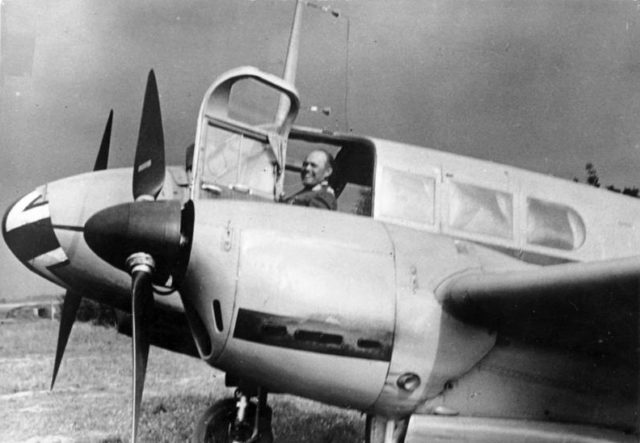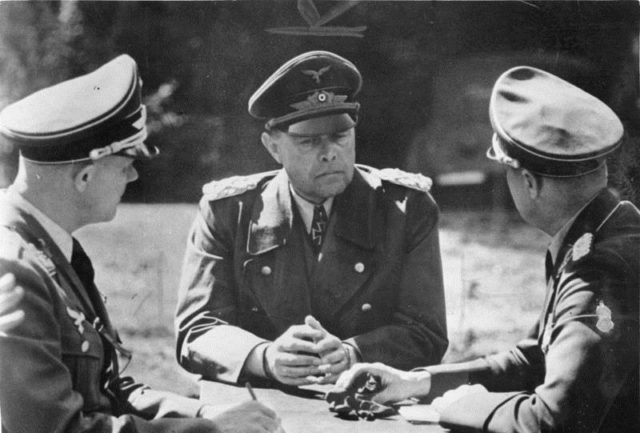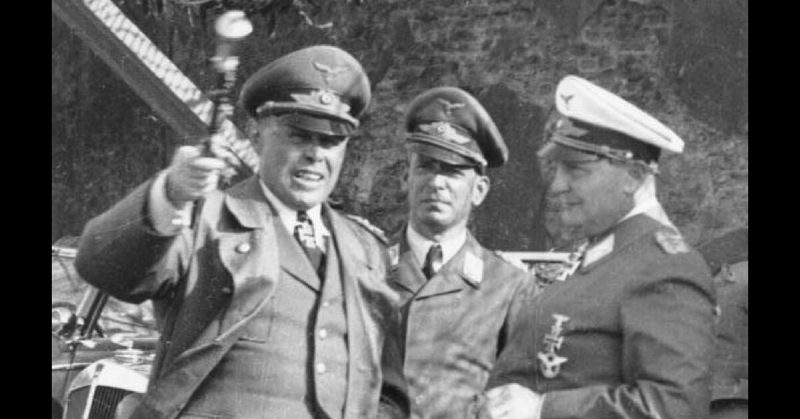Albert Kesselring had one of the most wide-ranging careers of WWII. A skilled German commander, he was fondly referred to by his admirers as “Smiling Albert.” He commanded in both the army and air force; took part in diplomacy and political administration and featured in nearly every theater of the war in Europe and the Mediterranean.
Army Days
Born in 1885, Kesselring joined the Bavarian army in 1904. Unlike many German officers, he did not have the career advantage that came with a military father. Instead, his steady rise through the ranks was based on skill and a willingness to learn.
During WWI, Kesselring served first in an artillery regiment and then as a staff officer. He became very accomplished in the role. He continued to advance through the ranks, developing a gift for administration and logistics.
At the end of the war, he remained in the army. He played a part in Germany’s covert rearmament and argued for the need for a General Staff.
Preparing the Luftwaffe
In 1933, Kesselring was transferred against his will to the newly founded Luftwaffe. There, he used his skills to ensure the smooth expansion and development of the organization. In June 1938, he was appointed Chief of the Luftwaffe General Staff.
Following clashes with the Secretary of State for Air, Kesselring asked for and was granted a transfer. He was promoted to general in command of a Luftflotte (Air Fleet).
War Arrives
In 1939, the long-awaited WWII broke out. Kesselring’s Luftflotte carried out the bulk of the air fighting in Poland. He visited aerodromes to welcome pilots returning from combat.
He was put in charge of work on Germany’s air defenses. Then Kesselring oversaw the campaign in the air war against the Allies in the Battle of France. After that, he supervised the air raids against Britain in preparation for an invasion. At times, he directly challenged the orders of his superiors in the German high command. When given an impossible task, he would advise it could not be done, but always followed orders if they did not listen.

Russia
In 1941, Kesselring and his Luftflotte were moved east in preparation for Operation Barbarossa; the invasion of Russia. Again, he had trouble with his superiors, especially Goering. Kesselring’s Luftflotte had achieved such remarkable successes against the Soviet Air Force; his superiors found the numbers hard to believe.
Italy
In November, as the Eastern Front ground to a muddy halt, Kesselring was moved to Italy. There he took up the post of Supreme Commander South, overseeing German operations in the Mediterranean, Balkans, and North Africa. Kesselring was given the task of countering Italian inefficiency and managing the delicate relationship between German and Italian forces.
His most immediate concern was to defeat the British Royal Navy, to secure supply lines in the Mediterranean. He saw that to do it; Malta had to be taken. Together with other commanders in the region, he planned an airborne invasion of the island, but Hitler canceled it at the last minute.
Africa
In November 1942, the Allies made advances in North Africa. It was a blow to the Italians, whose colonies and armies were under threat. Kesselring moved to secure a defensive line while awaiting reinforcements.
Under the command of Rommel, the Germans and Italians had some successes against the Allies, but Rommel was another headache for Kesselring, often ignoring his orders.
The arrival of American forces ensured victory for the Allies in North Africa. Kesselring faced a new concern – defending southern Europe from a seaborne invasion.
Sicily
Sicily was the obvious stepping stone for the Allies from Africa to Europe. Kesselring tried to prepare for the defense of the island, but disagreements between Italian and German officers created a farce in which commanders issued contradictory orders to the troops.
Despite Kesselring’s efforts to bolster the island, it fell to the Allies, leaving them poised to invade mainland Italy.

Italy Again
The Italian government was wavering in its support for Germany. Kesselring’s role became that of a diplomat as much as a soldier, trying to maintain an alliance on its last legs.
He could not fend off disaster. The Italians overthrew Mussolini and switched sides. The Allies invaded Italy and began advancing up the peninsula.
Kesselring oversaw a long fighting withdrawal from Italy. Mussolini was rescued in a daring paratroop operation, and an alternative pro-German government was set up. Kesselring’s troops forced the Allies to fight a difficult battle for every inch of Italy.
The West
In March 1945, Kesselring was made Supreme Commander West. In that role, he oversaw attempts to halt the Allied advance from France into Germany. It was desperate work. Caught between his faith in Hitler’s optimistic assessments and the reality of reports on the ground, Kesselring clashed with disillusioned subordinates.
For the final time, Kesselring had been given an impossible task. He did his best, but Germany was falling. In April, news reached him that must have come as no surprise. Hitler was dead. The war was drawing to a close.
The End
Even after his surrender, Kesselring tried to help the men who had been under his command. Yugoslav forces were mercilessly pursuing German soldiers in the Balkans. He asked the Allies to let him ferry those soldiers out and save their lives. He was forbidden.
In 1947, Kesselring was tried for war crimes. He was found guilty, although people argued he was carrying the blame for the actions of others. His death sentence was commuted to life imprisonment, but he was released in 1952 due to a worsening heart condition. He died in 1960.
He had an extraordinary career, facing significant challenges whatever the odds. He was a gifted leader but for a monstrous and fatally flawed regime which was as wasteful as it was tragic.
Source:
Ralph Bennett (1999), Behind the Battle: Intelligence in the War with Germany 1939-1945
James Lucas (1996), Hitler’s Enforcers: Leaders of the German War Machine 1939-1945
David Rooney (1999), Military Mavericks: Extraordinary Men of Battle
